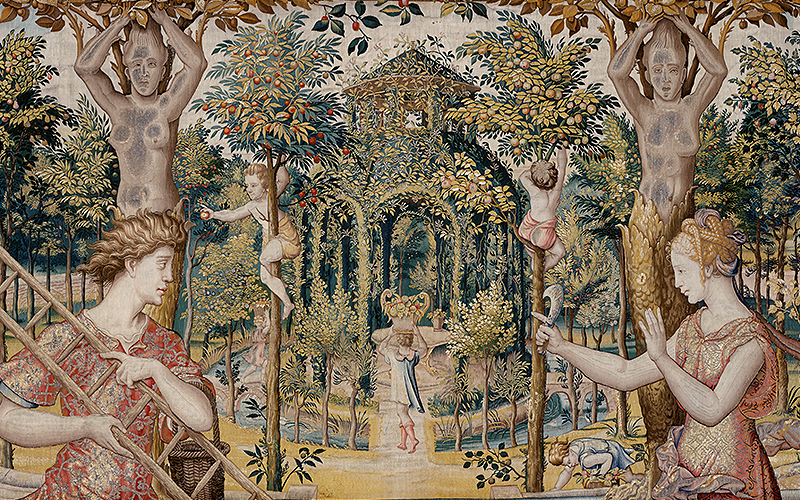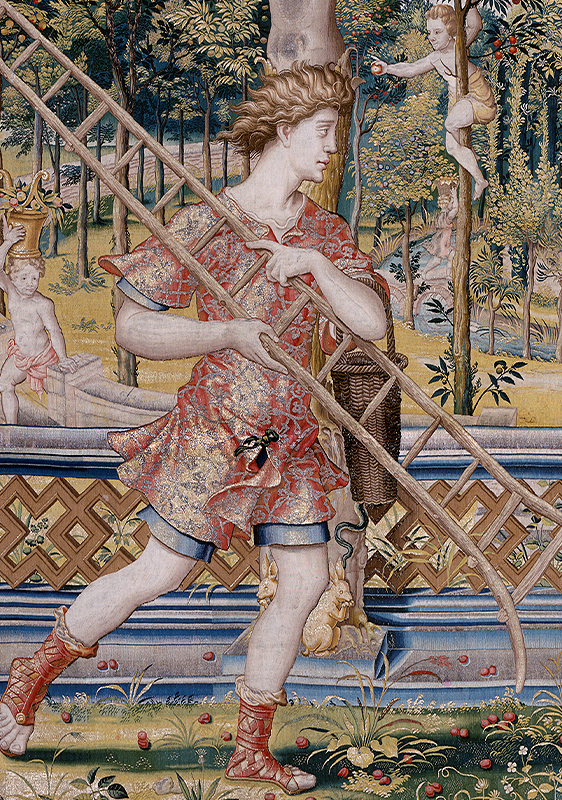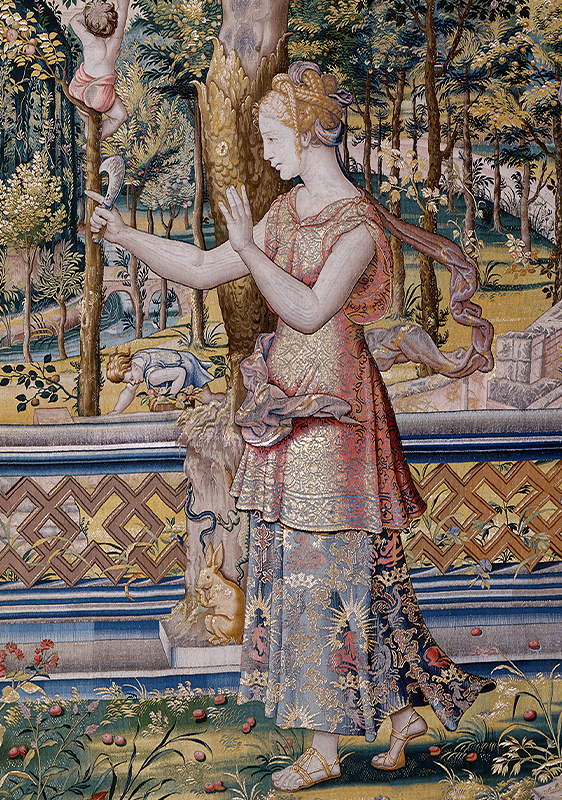Vertumnus and Pomona

The love story between Vertumnus and Pomona is probably one of the most famous in the Gulbenkian Collection, originating from Ovid’s Metamorphoses. Vertumnus, god of gardens and orchards, responsible for the changing of the seasons, and Pomona, goddess of fruit trees, have been represented many times by various artists, including Peter Paul Rubens.
In Ovid’s work, Pomona lives a reclusive life, dedicated exclusively to her chores of looking after her gardens. Endowed with unparalleled beauty, she captures the attention of various gods, who try to seduce her. Using his ability to change his appearance, Vertumnus tries, in vain, to win the goddess over with various disguises. Desperate, he ends up transforming into an old woman, trying to convince Pomona of the virtues of marriage. When this attempt fails, Vertumnus decides to assume his own form and Pomona immediately falls in love with him.


In the Gulbenkian Collection’s tapestry, which was previously part of the Austrian Imperial collections, the gods appear facing one another, preparing for the fruit harvest: Vertumnus carries a ladder and Pomona a tool that looks like a pruning knife. In the background, we see the gardens and orchards cared for by the goddess. This example is the fifth of a set of nine; the other tapestries in the group, which portray other moments from the story, with Vertumnus disguised as different characters, are currently housed in the Kunsthistorisches Museum in Vienna.
The tapestry was made in Flanders, after cartoons by Pieter Coecke van Aelst, and is on display in the East-West Gallery of the Collection.
A Collection of Stories
On a weekly basis, we shared a story around Calouste Gulbenkian’s collection. This section was created in 2020, which is why the articles refer to the Calouste Gulbenkian Museum collection as the Founder’s Collection.
Other stories